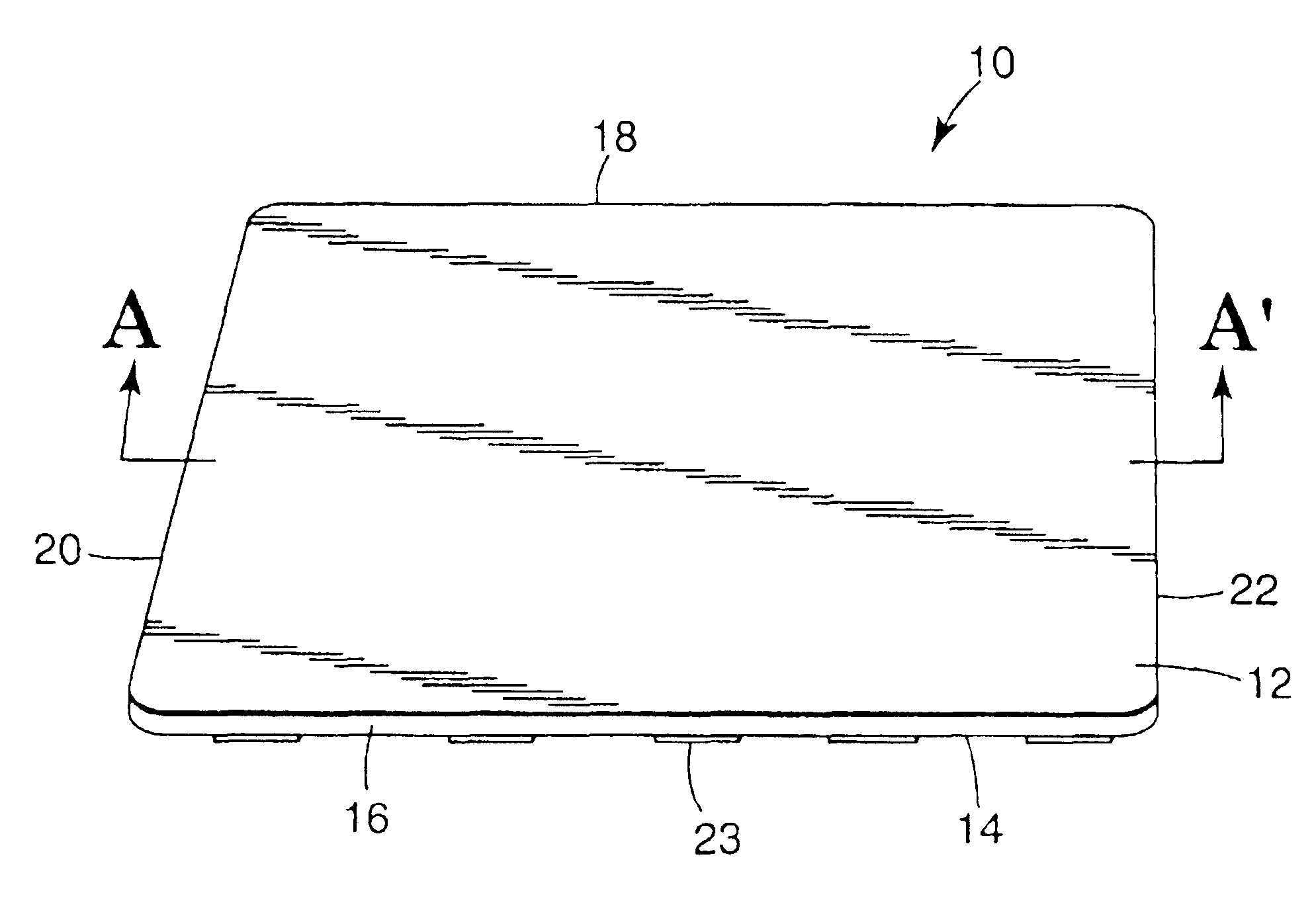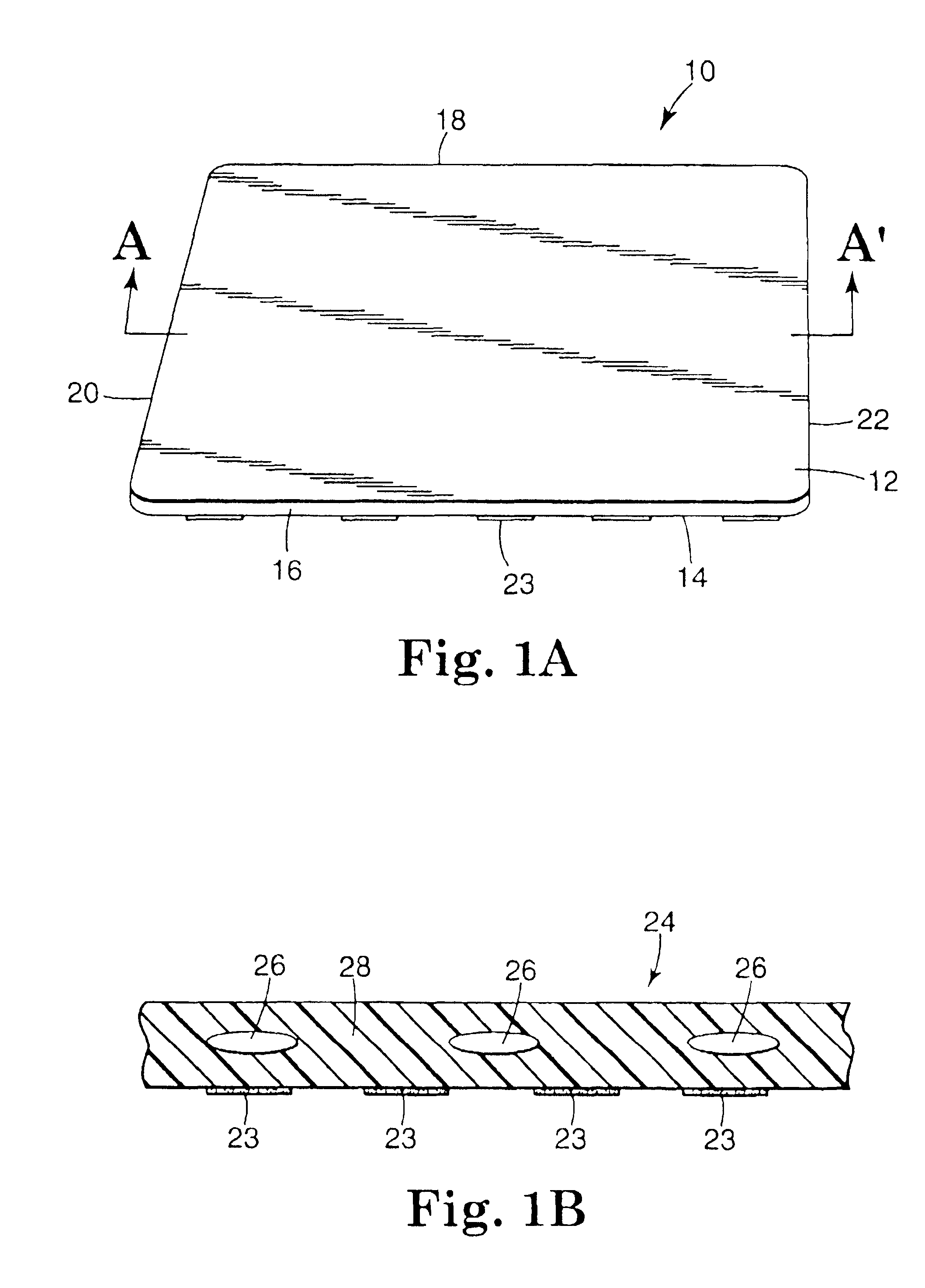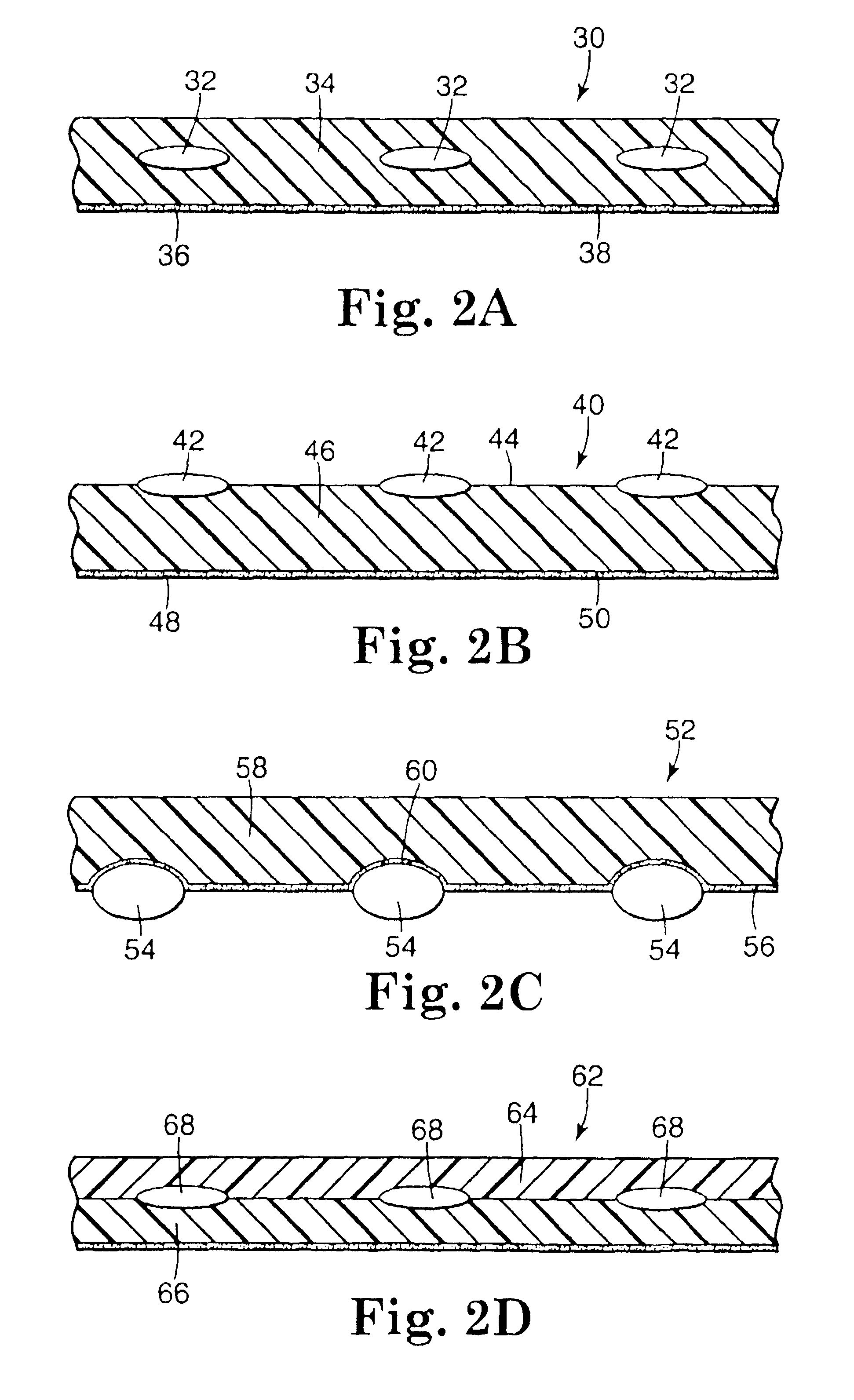Adhesive composite having distinct phases
a technology of adhesive articles and phases, applied in the field of conformable adhesive articles, can solve the problems of difficult production, difficulty in making large breathable films, and adhesion of adhesion coated films, and achieve the effects of reducing the thickness of the matrix, increasing the stiffness of the article, and strengthening the matrix
- Summary
- Abstract
- Description
- Claims
- Application Information
AI Technical Summary
Benefits of technology
Problems solved by technology
Method used
Image
Examples
examples
[0076]The invention is further illustrated by the following examples, which are not intended to limit the scope of the invention. In the examples, all parts, ratios and percentages are by weight unless otherwise indicated. The following test methods were used to characterize the articles in the following examples:
Test Methods
Tensile Strength and Elongation
[0077]Tensile strength and elongation in the down-web direction of co-extruded articles were determined in the following manner. A 10.2 cm long by 2.5 cm wide sample was placed between the jaws of an Instron™ Tensile Tester to expose a 5.1 cm gauge length. The crosshead and chart speeds were set at 25.4 cm / min. The jaws were drawn apart at 25.4 cm / min until the machine detected a break. Tensile strength and percent elongation were calculated by the Instron™ software. Tensile strength measurements (each with 3 replications) were taken on samples oriented in the cross web direction (with force of pull perpendicular to the orientation...
examples 1 and 2
[0084]Examples 1 and 2 describe the preparation of extruded articles having an elastic continuous polyurethane matrix and a plurality of distinct inelastic phases. The inelastic phases comprised either modified polyester (Example 1) or polyethylene (Example 2).
[0085]For Example 1, a continuous extrusion was carried out using a 45 cm (18 in) wide Cloeren™ two-layer multi-manifold die (available as Model 96-1502 from Cloeren Co., Orange, Tex.) that had been modified as described in U.S. patent application 09 / 365,286, filed on Jul. 30, 1999. A vane tip containing 95 orifices was mounted to the vane manifold with socket head bolts. The vane tip had circular orifices each having a diameter of 508 microns (20 mils) and separated by a space of 4.1 mm (0.160 in) and extended from the vane tip 2.5 mm (0.100 in) into the matrix flow.
[0086]The continuous matrix material was an elastic material, Estane™ 58237 polyurethane (B.F. Goodrich, Cleveland, Ohio). It was fed with a 51 mm (2.0-inch) Berl...
example 3
[0088]Example 3 describes the preparation of an extruded adhesive article having two layers of different materials (polyacrylate PSA and polyurethane) that comprise an elastic continuous polymeric matrix and a plurality of distinct inelastic phases comprised of modified polyester.
[0089]An acrylic PSA (96 weight percent isooctyl acrylate / 4 weight percent methacrylic acid, water suspension polymerized), prepared according to U.S. Pat. No. 4,833,179 (Young) was dried to about 90 weight percent and melt blended with Floral™ 85 (a tackifying resin available from Hercules Inc., Wilmington, Del.) in a weight ratio of acrylate to Foral™ of 80:20. The PSA was designated as PSA A.
[0090]Example 3 was made in a manner similar to Example 1 except that the two layers of continuous matrix material were made of different materials and an additional extruder was used. The first layer of continuous matrix material was made of a tacky elastomeric material, PSA A, and the second layer was made of the e...
PUM
 Login to View More
Login to View More Abstract
Description
Claims
Application Information
 Login to View More
Login to View More - R&D
- Intellectual Property
- Life Sciences
- Materials
- Tech Scout
- Unparalleled Data Quality
- Higher Quality Content
- 60% Fewer Hallucinations
Browse by: Latest US Patents, China's latest patents, Technical Efficacy Thesaurus, Application Domain, Technology Topic, Popular Technical Reports.
© 2025 PatSnap. All rights reserved.Legal|Privacy policy|Modern Slavery Act Transparency Statement|Sitemap|About US| Contact US: help@patsnap.com



